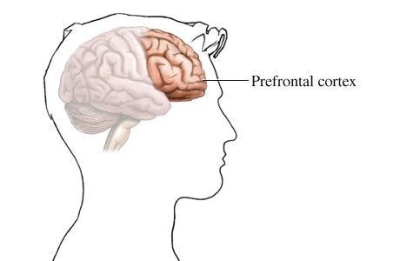
Many parents do not understand why their teenagers
occasionally behave in an impulsive, irrational, or dangerous way. At times, it
seems like they do not think things through or fully consider the consequences
of their actions. However, what these imaging studies show is that the brain
may be behind much of this behavior. To
understand why adolescents act a certain way, it is important to understand
what is happening in their brain.
As puberty begins, the prefrontal cortex (PFC) also
begins to develop at an amazing rate, paralleling brain growth in the first
three years of life. Their brains are wired in a way that floods them with
emotional responses to external events. Adults think with the prefrontal
cortex, the brain's rational part, but teens process information with the
amygdala, the emotional part. The amygdala is part of the limbic system of the
brain, which is fully functioning and utilized by age 13-14 years. The PFC
fully develops between the ages of 18-25.
The prefrontal
cortex is located in the very front of the brain, just behind the forehead. In
charge of abstract thinking and thought analysis, it is also responsible for
regulating behavior. This includes making choices between right and wrong, and
predicting the probable outcomes of actions or events. This brain area also
governs social control, such as suppressing emotional or sexual urges. Additionally,
the PFC helps to focus thoughts, which enables people to pay attention, learn,
and concentrate on goals.
People with damaged to the PFC have trouble on the
delay-response task, in which they see or hear something, and then have to
respond it after a delay. Unfortunately, the PFC is one of the brain regions
most susceptible to injury. When the pathways between the pathways prefrontal cortex and
the rest of the brain are damaged or altered, serious personality changes can
result. For example, a person who had been formally outgoing can become quiet
and withdraw after the injury. A damaged
PFC can negatively affect a person's ability to assess situations or perform
tasks. Since social judgments are made in this brain area, people with damage
to the PFC are unable to discern appropriate behavior and/or suffer from
emotional distress, such as irrational fears, anxiety, euphoria, and
irritability.
The video below explains how our thoughts and
actions are able to change while we grow up. It explains how the prefrontal
cortex in adolescence and adults are very different such as making decisions and it's contributions with our actions. In it, you will see an assistant professor
explaining a procedure to determine the changes in development in adolescence
and adults.

